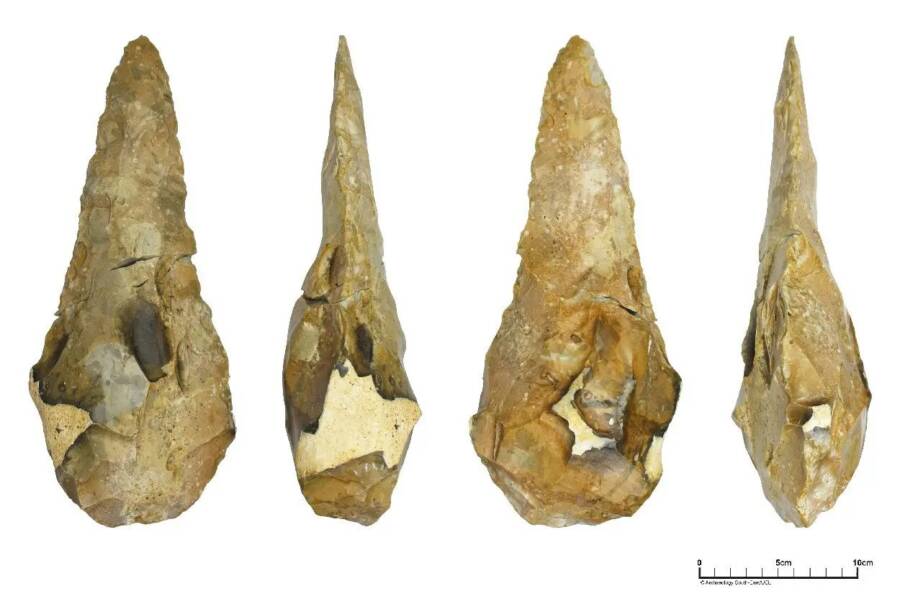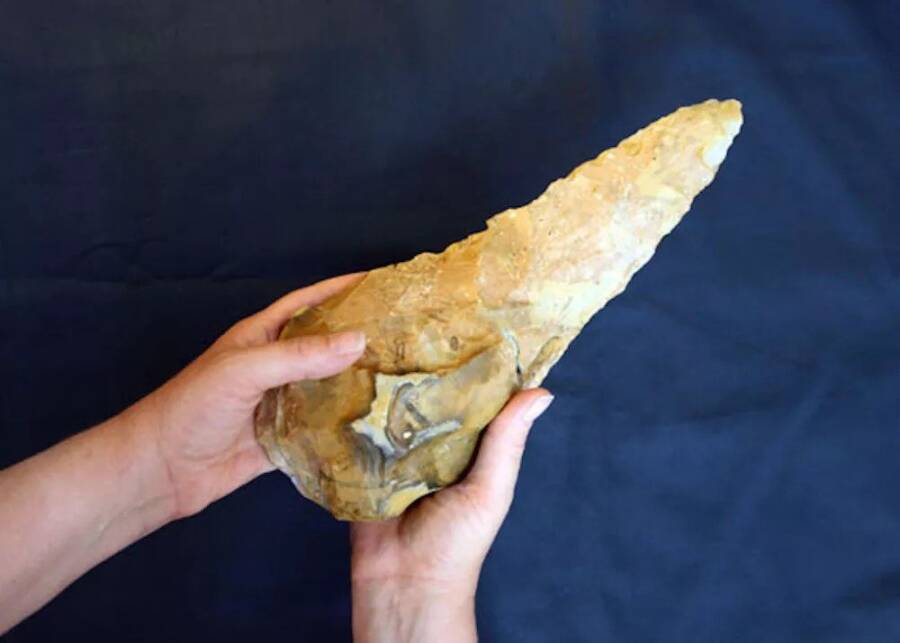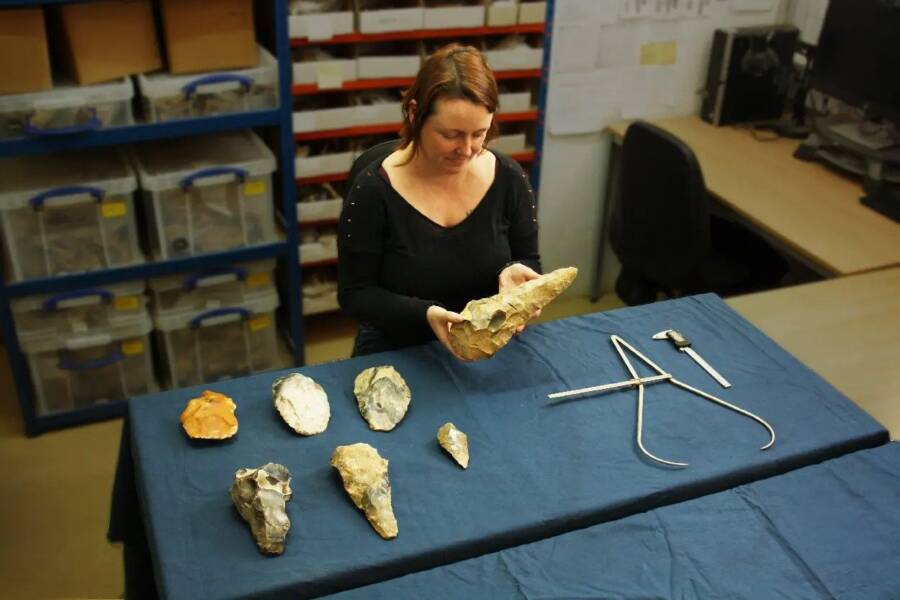At the time that the stone handaxes were made, early Neanderthals and other "archaic" humans populated Britain.

ARCHAEOLOGY SOUTH-EAST/UCLThe two giant handaxes are among the oldest and largest prehistoric stone tools ever found in Britain.
While excavating land in Kent, England, ahead of the construction of a school, archaeologists uncovered 800 stone artifacts thought to be 300,000 years old, including two “giant” handaxes. The handaxes are so large as to be unwieldy, and would have required two hands to pick up.
“We describe these tools as ‘giants’ when they are over 22 cm [8.6 inches] long and we have two in this size range,” senior archaeologist Letty Ingrey of University College London’s Institute of Archaeology explained in a statement. “The biggest, a colossal 29.5 cm [11.5 inches] in length, is one of the longest ever found in Britain. ‘Giant handaxes’ like this are usually found in the Thames and Medway regions and date from over 300,000 years ago.”
Ingrey further explained to Newsweek that the tools probably date from an Ice Age era some 300,000 to 330,000 years ago. The tools could have been made by early Neanderthal people who inhabited Britain at the time or by an “other archaic human species.” As Ingrey explained, it’s difficult to know for certain who made the handaxes since “we don’t have any fossil evidence from the site [and] can’t be sure exactly who was making these tools.”
That’s not the only question that archaeologists have about the handaxes.

Ingrey, et al.Archaeologists believe the giant handaxes are some 300,000 years old but many questions about their origin and use remain.
“These handaxes are so big it’s difficult to imagine how they could have been easily held and used,” Ingrey noted in the university statement about the discovery. “Perhaps they fulfilled a less practical or more symbolic function than other tools, a clear demonstration of strength and skill.”
To Newsweek, Ingrey added that the handaxes were probably used as “cutting tools” for butchering animals or cutting up meat. At the time, prehistoric people would have likely hunted horses, red deer, and possibly even straight-tusked elephants and lions.
They also would have utilized many other tools like sharp flakes and scrapers. As Ingrey told Newsweek: “We only have stone tools preserved at the site (made from flint), but we know from other sites that people at this time would have had wooded spears and potentially other tools made from bone or wood that just haven’t survived on this site.”

ARCHAEOLOGY SOUTH-EAST/UCLArchaeologist Letty Ingrey holding the largest of the handaxes that she and other archaeologists discovered during excavations in Kent.
As incredible as the discovery of the handaxes and the other stone tools is, it’s not the only thing archaeologists discovered during their excavations.
The university statement also notes that the archaeologists uncovered a Roman cemetery dating between the first and fourth centuries, or “at least a quarter of a million years later than” the stone tools.
Archaeologists suspect that the 25 people buried there — 13 of whom were cremated and four of whom were buried in wooden coffins — may have been residents of a former Roman villa, which lay just 2,800 feet south of the cemetery. Alongside the human remains, archaeologists also found bracelets, pottery, and animal bones at the site.
Both the Roman site and the Ice Age will be studied further. And archaeologists are hopeful that they will learn more about the people who made the giant handaxes.
“The excavations… have given us an incredibly valuable opportunity to study how an entire Ice Age landscape developed over a quarter of a million years ago,” Matt Pope of University College London’s Institute of Archaeology noted.
“A program of scientific analysis, involving specialists from UCL and other UK institutions, will now help us to understand why the site was important to ancient people and how the stone artefacts, including the ‘giant handaxes,’ helped them adapt to the challenges of Ice Age environments.”
After reading about the “giant” stone handaxes discovered in England, see why researchers think that cuts on a 1.5 million year old human shinbone are evidence of prehistoric human cannibalism. Or, discover the story of the 1.4 million-year-old handaxe made from hippo bone found in Ethiopia.





